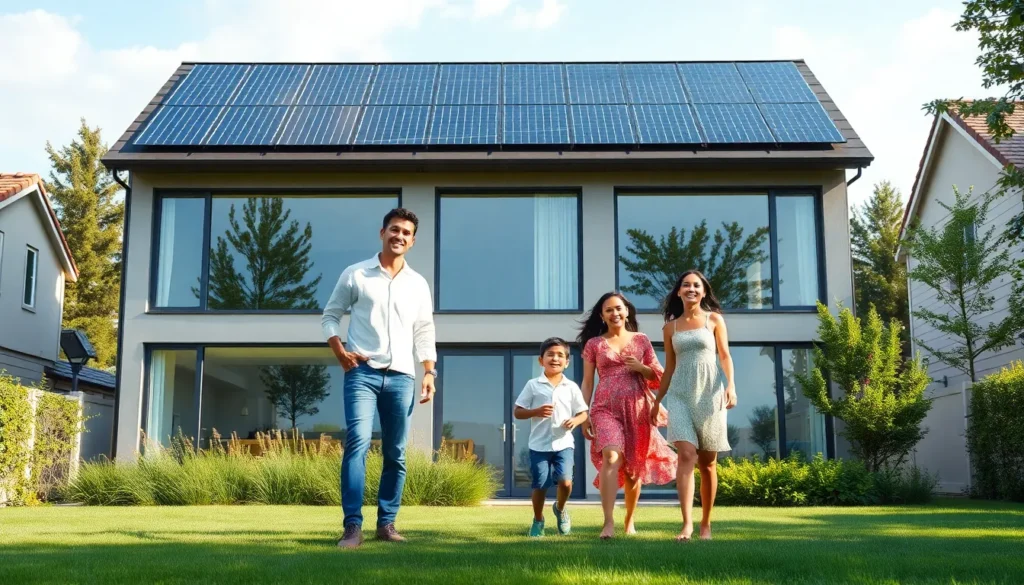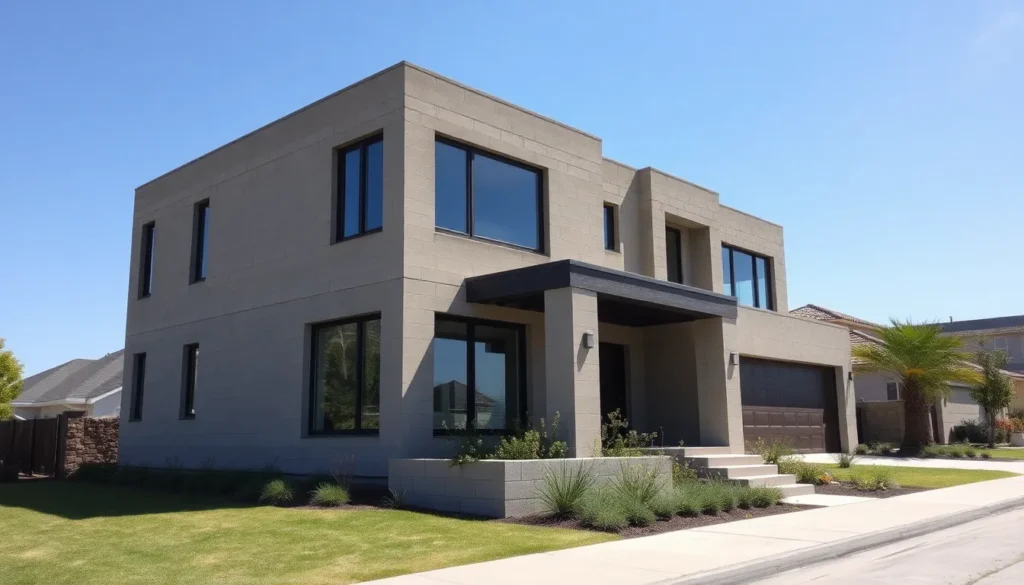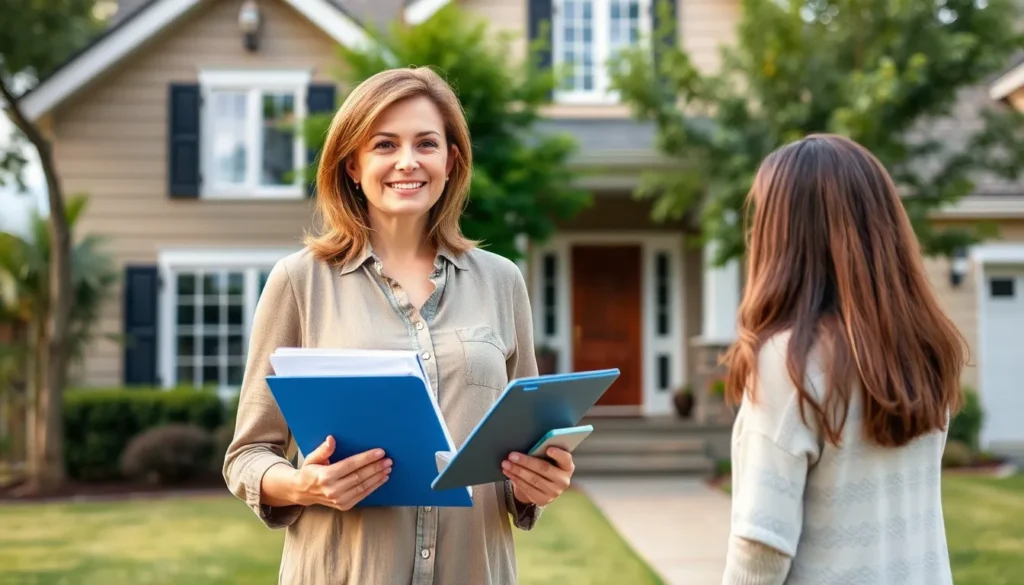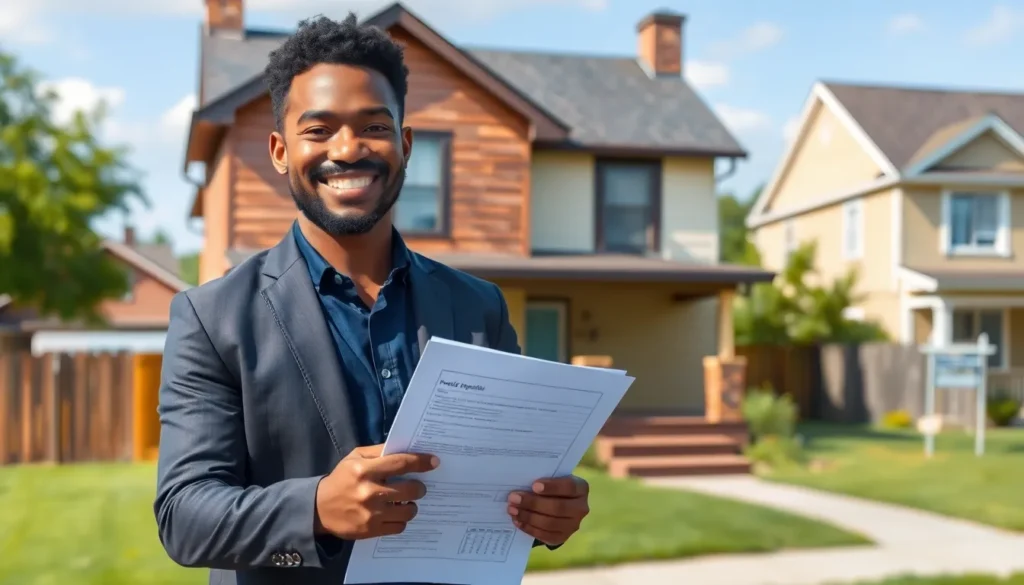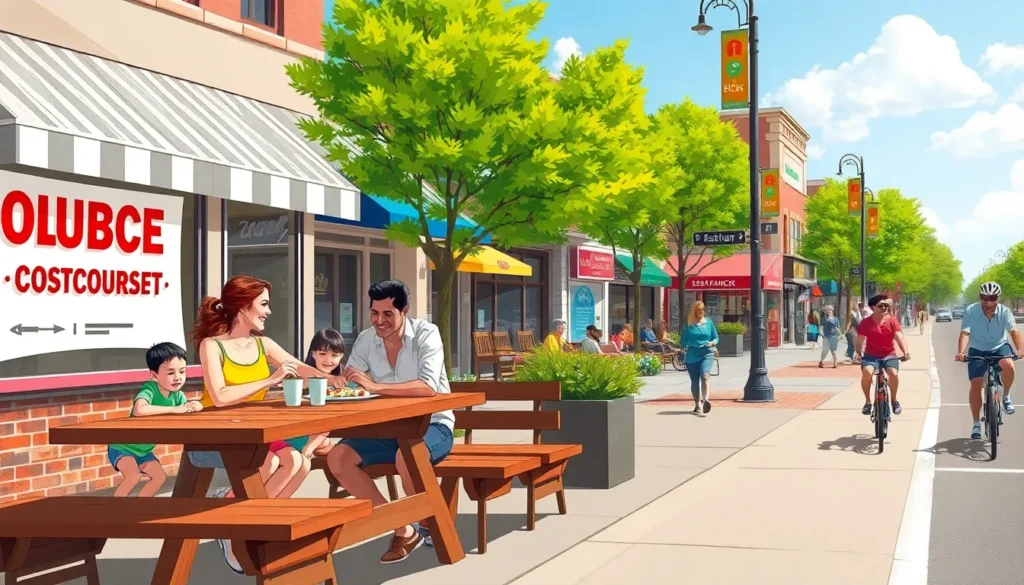In a world where energy bills seem to have a mind of their own, energy-efficient homes are like the superhero we never knew we needed. Imagine cutting those pesky costs while saving the planet—sounds like a win-win, right? These homes not only keep your wallet happy but also provide a cozy sanctuary that Mother Nature would approve of.
Table of Contents
ToggleOverview of Energy-Efficient Homes
Energy-efficient homes integrate advanced technologies and sustainable practices to minimize energy consumption. These residences utilize high-quality insulation, energy-saving appliances, and renewable energy sources, such as solar panels. By optimizing energy use, homeowners experience substantial reductions in utility bills.
Sustainable materials contribute to the overall efficiency of these structures. Flooring, siding, and roofing made from recycled products enhance thermal performance, while also reducing waste. Many homeowners appreciate the aesthetic and financial benefits of these eco-friendly materials.
Design also plays a significant role in energy efficiency. Strategic positioning of windows captures natural light and promotes ventilation, reducing the need for artificial lighting and climate control. Innovative design elements, including open floor plans, enhance airflow and comfort.
Heating and cooling systems in energy-efficient homes often incorporate smart technology. Programmable thermostats and energy management systems allow residents to monitor and adjust their energy usage effectively. These improvements lead to lower energy consumption without sacrificing comfort.
Government incentives encourage the construction and renovation of energy-efficient homes. Tax credits, rebates, and grants are available to offset the costs of energy-saving upgrades. Such financial benefits make energy efficiency an attractive long-term investment.
Energy-efficient homes combine sustainable living with modern conveniences. They provide comfort and cost savings, making them an appealing option for environmentally-conscious homeowners.
Benefits of Energy-Efficient Homes
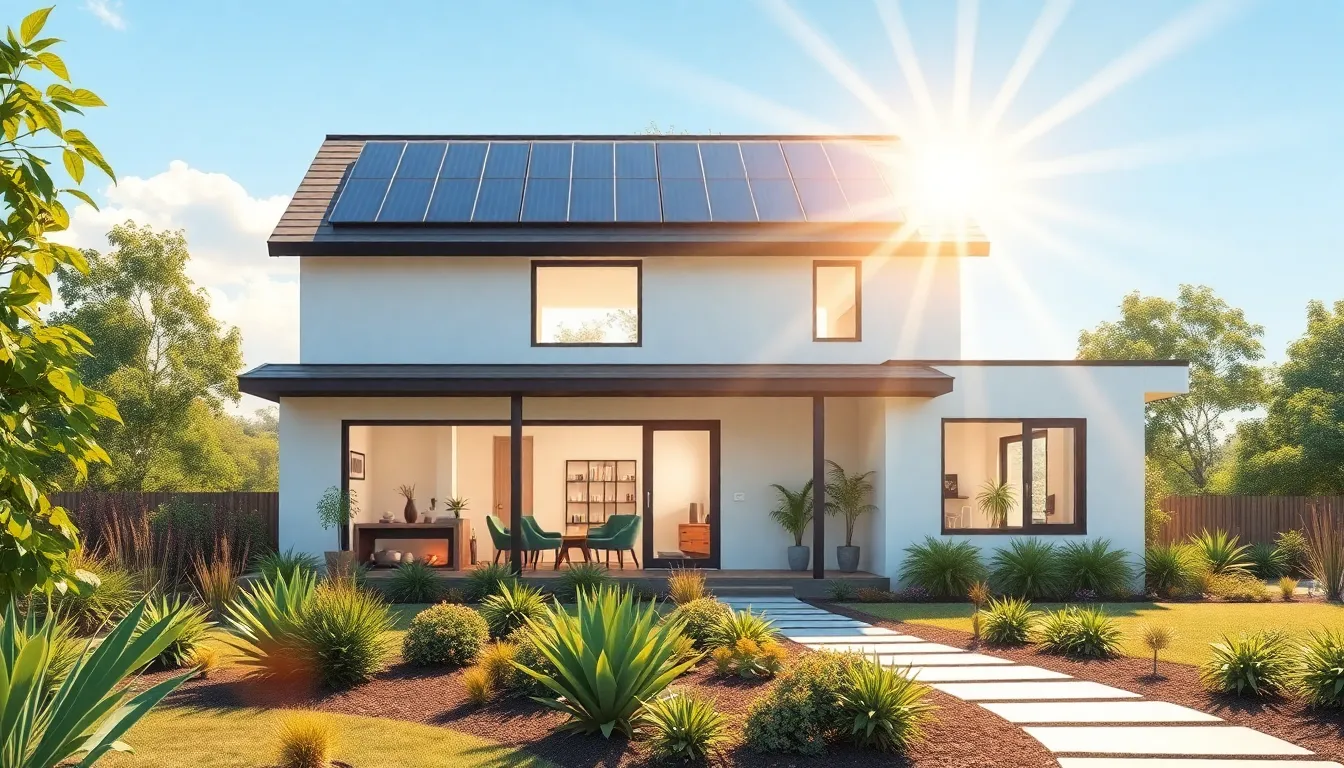
Energy-efficient homes provide significant advantages, particularly in reducing energy costs and benefiting the environment.
Environmental Impact
Energy-efficient homes play a vital role in reducing greenhouse gas emissions. These structures incorporate sustainable materials like recycled products, which contribute to less waste in landfills. High-quality insulation minimizes heat loss, promoting lower energy demand. Solar panels convert sunlight into usable energy, further decreasing reliance on fossil fuels. Natural light and proper ventilation reduce the need for artificial lighting and excessive heating or cooling. Homeowners contribute to a healthier planet by opting for energy-efficient practices and products, fostering a sense of responsibility towards environmental conservation.
Financial Savings
Homeowners experience considerable financial savings through energy-efficient homes. Lower utility bills often result from reduced energy consumption, allowing families to allocate resources elsewhere. Many energy-efficient appliances use up to 50 percent less energy than traditional models. Government incentives, including tax credits and rebates, make these homes more appealing financially. Long-term investments in energy-efficient systems lead to even greater savings over time. Property values often appreciate due to energy-efficient features, making them a smart choice for many homeowners.
Key Features of Energy-Efficient Homes
Energy-efficient homes incorporate several key features that enhance comfort while minimizing energy consumption. These features play a significant role in creating sustainable living spaces.
Insulation and Ventilation
Effective insulation plays a crucial part in energy efficiency. High-quality insulation materials prevent heat loss in winter and keep homes cool in summer. Proper ventilation systems allow fresh air circulation, reducing the need for heating and cooling. Homes with strategically placed windows maximize natural light, which further decreases reliance on artificial lighting. Additionally, energy recovery ventilators can improve indoor air quality while retaining heat, ensuring comfort year-round. Homeowners enjoy lower energy bills when both insulation and ventilation work together efficiently.
Energy-Efficient Appliances
Energy-efficient appliances are essential components of sustainable homes. These appliances use up to 50 percent less energy compared to traditional models. Refrigerators, washing machines, and dishwashers equipped with the ENERGY STAR label meet high energy efficiency standards. Homeowners benefit from lower utility costs due to the reduced energy consumption. Many appliances also feature smart technology, enabling users to monitor and optimize usage. Regular upgrades to energy-efficient appliances enhance overall home performance, contributing to long-term financial savings while promoting environmental conservation.
Energy-Efficient Home Technologies
Energy-efficient homes utilize innovative technologies to enhance sustainability and reduce energy consumption. These advancements contribute to both financial savings and a healthier environment.
Solar Energy Systems
Solar energy systems represent a key element of energy-efficient homes. They capture sunlight and convert it into usable electricity, substantially lowering utility bills. On average, solar panels can reduce electricity costs by 70 percent. Systems typically include photovoltaic panels, inverters, and battery storage options, ensuring energy availability even during outages. Homeowners benefit from government incentives, making these systems more accessible. These installations not only provide financial returns but also decrease carbon footprints, promoting ecological sustainability.
Smart Home Automation
Smart home automation enhances energy efficiency through technology and convenience. Programmable thermostats allow homeowners to tailor heating and cooling to their schedules, preventing energy waste. Devices like smart lighting systems automatically adjust based on occupancy, ensuring lights only operate when needed. Data shows that smart home technologies can reduce energy consumption by up to 30 percent. Additionally, interconnected appliances enable monitoring and control from smartphones, allowing for efficient energy management. Such automation fosters a comfortable living environment while supporting sustainability efforts.
Energy-efficient homes represent a forward-thinking approach to modern living. They offer homeowners not just financial savings but also a chance to make a meaningful impact on the environment. By embracing sustainable practices and advanced technologies, these homes create a harmonious balance between comfort and ecological responsibility.
Investing in energy efficiency isn’t just about reducing bills; it’s about fostering a healthier planet for future generations. As awareness grows and incentives continue to evolve, more homeowners are likely to recognize the long-term benefits of energy-efficient living. Ultimately, choosing an energy-efficient home is a step towards a sustainable future that benefits both individuals and the planet.

